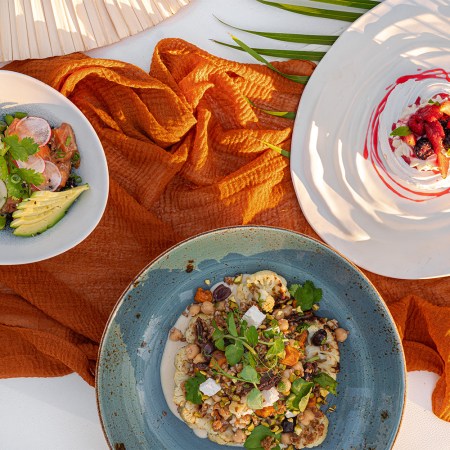From its inception, Komodo was the kind of restaurant to divide opinions.
That’s to be expected when the restaurateur — Jeffrey Chodorow, of China Grill and Asia de Cuba fame — who trademarked the much-imitated Miami staple of restaurant-as-spectacle joins forces with Groot Hospitality’s David Grutman, the de facto king of South Beach nightlife.
Whether they love it or hate it, though, there seems to be one thing critics can agree on: the Peking duck. (Per The Infatuation, though I could cite a dozen similarly ambivalent reviews here: “The food is also probably what everyone is paying the least attention to here, even if there is a decent Peking duck on the table.”)
The showpiece of the hulking Pan-Asian menu that awaits diners at their tables (via QR code, these days), the duck is also a showpiece in the literal sense. Upon entering the restaurant’s bustling bar area, it is impossible to miss the exhibition kitchen immediately to your right, where, behind frosted glass, dozens of crackling whole ducks hang from black metal hooks.
This is the Duck Room, and it is the province of Liu Bingguang, aka the “Duck Man.” Originally from Guangzhou, China, Liu is responsible for lording over Komodo’s signature item, expertly shuffling the fowls between roasting ovens and vats of marinade before cleaving them with algorithmic precision for service.

The ducks themselves are uniform in size and origin: always seven pounds, and hand-selected from a farm in Pennsylvania before making their way south to the bright lights of Brickell. Once they arrive, they’re subjected to a five-step, 24-hour process that Liu describes to me in deliberately broad terms, wary of divulging his trade secrets.
It begins by defeathering the bird (a necessary step for any duck preparation, we hope). From there, Liu stuffs each bird with a “specialty five-spice mix” and then sews it together, allowing the meat to cure for three to six hours.
That dry cure is immediately followed by a wet rub with the same vinegar-based mixture that you can see Liu generously lathering on the prepped ducks as they await butchery. Once coated, they’re hung to air-dry overnight, which allows the skin to tighten ahead of cooking.
The final step is the most integral: a 70-minute roast at 350°F in a fiery vertical oven on full display to diners. The oven isn’t just for show, though: it allows the bird to cook evenly on all sides, until the skin is nice and crispy.
While my emailed request to share the recipe — “… or some version of it,” I innocently add — goes unanswered, intrepid home chefs hoping to try their hand at a Peking duck should keep all of the above in mind. The generously applied inside-out dry cure followed by an overnight baste ensures that the meat stays moist during the roast, and it’s essential that the bird gets even exposure on all sides while cooking.
“The key to a perfect Peking duck is the skin,” says Liu. “Crispy and flavorful.”

Diners at the restaurant can find the Peking duck in two dishes that are ferried about the massive dining room and the exotic “dining nests” towering overhead. The Duck Lettuce Wraps ($19) are topped with pickled vegetables and crushed peanuts with a side of hoisin sauce, while the whole roasted Peking Duck ($92) is a family-style dish in which large strips of duck are served with pancakes, cucumber, scallion and hoisin. If you’re making pancakes at home, Liu suggests Happy Belly pancakes shipped straight from the motherland.
This article was featured in the InsideHook Miami newsletter. Sign up now for more from the 305.






















